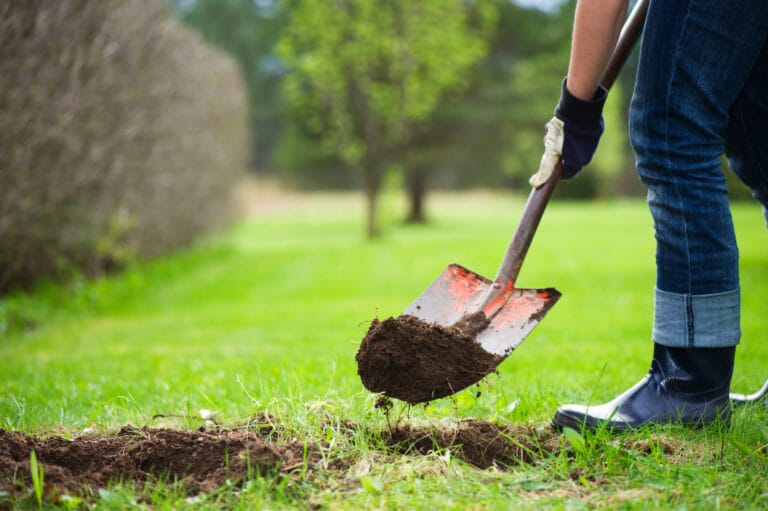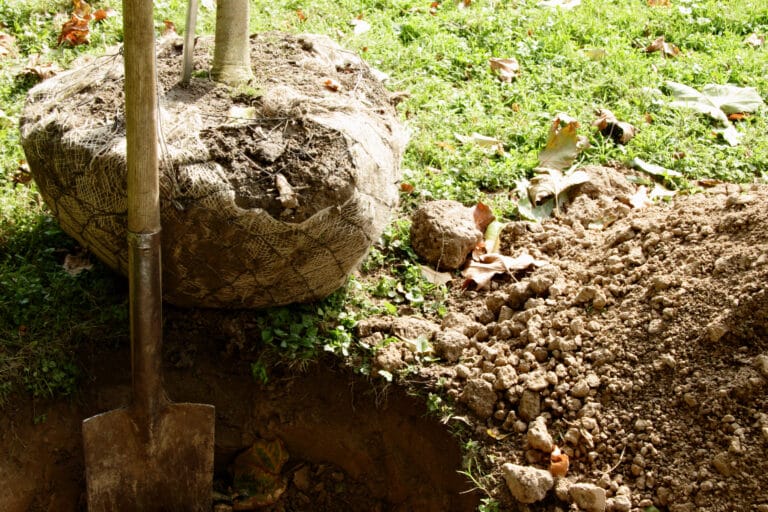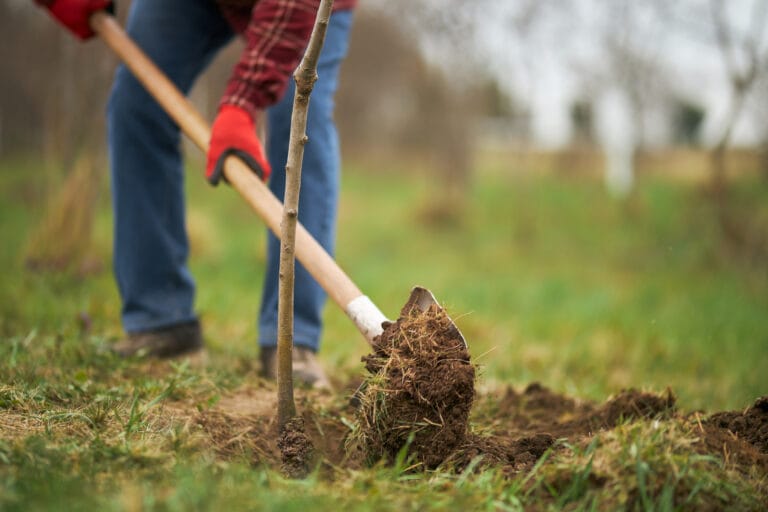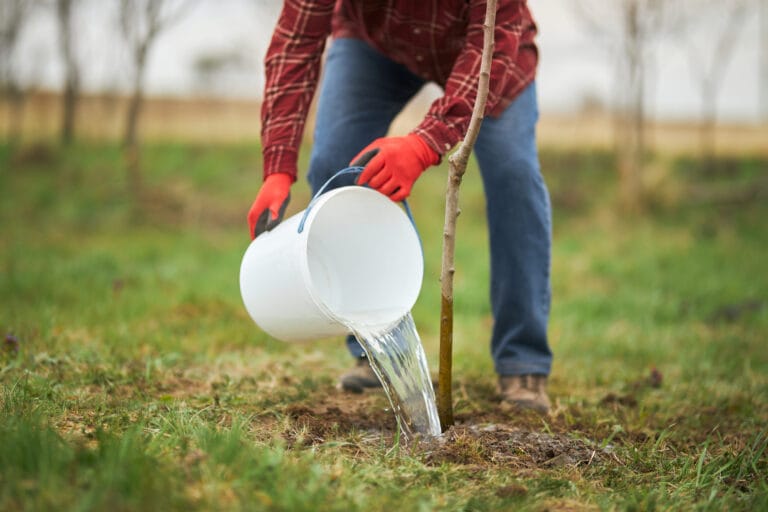Plant Your Place!
A City of Ottawa program delivered in partnership with EnviroCentre
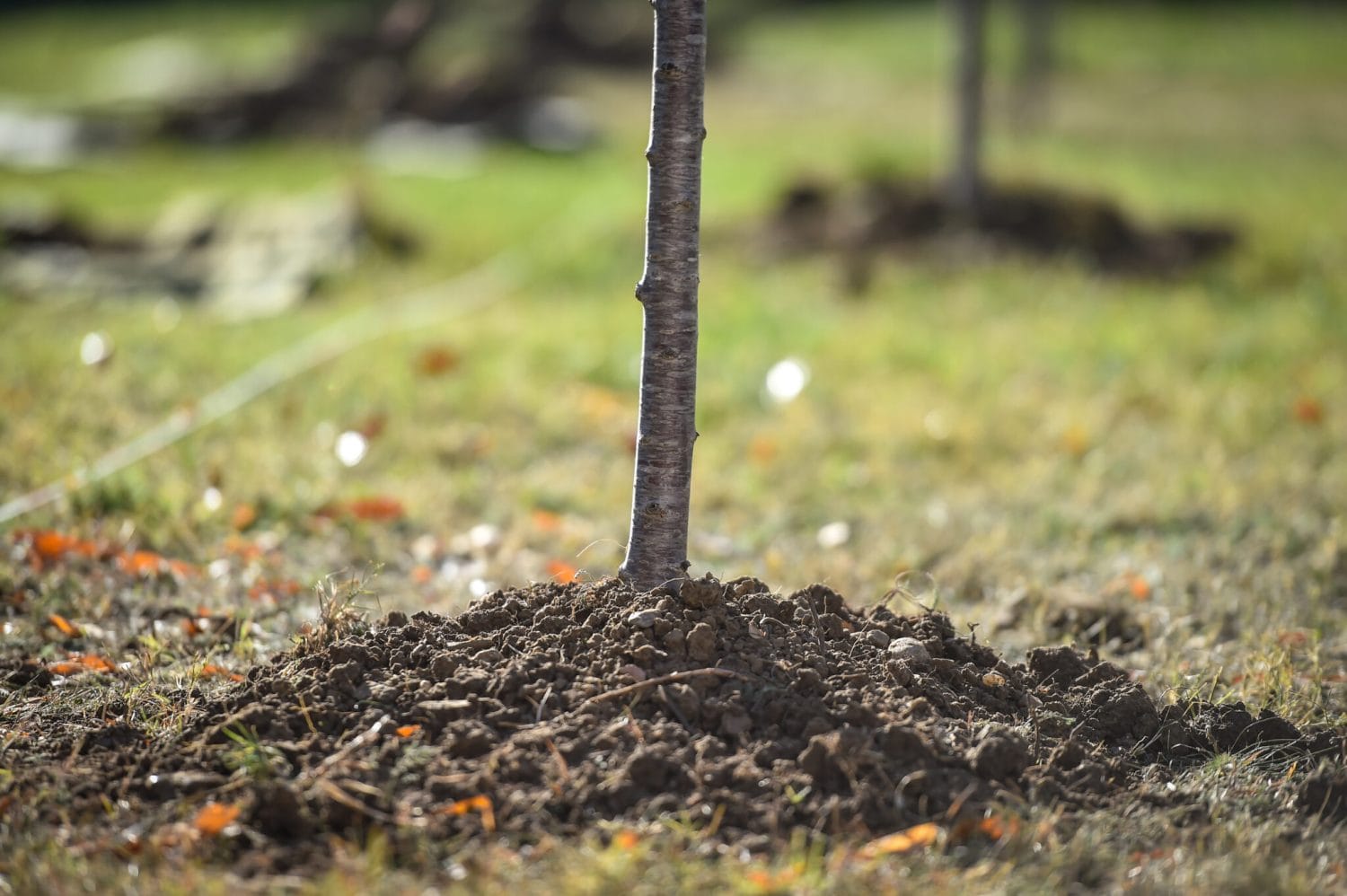
Tomorrow Takes Root Today
Trees play a vital role in our City. They absorb rainwater, help clean our air, absorb carbon, provide shade, and reduce the temperature in our built-up areas.
Ottawa’s urban tree canopy is an important part of sustaining vibrant, livable, and unique neighbourhoods, and promotes health and well-being equitably for all of the City’s residents and visitors!
Did you know that 40% of Ottawa’s urban area is private property? This means we must work together to grow our tree canopy cover. The City of Ottawa has developed the new Plant Your Place! program for planting trees on private residential properties.
Through the new Plant Your Place! program, trees are available free of charge to residents through two streams: 1) City-Wide Tree Distribution, and 2) Full-Service Tree Planting in neighbourhoods with low canopy cover. Participants in both program streams will be provided with educational resources and information on tree care and maintenance to support long-term tree health and survival.
The Plant Your Place! program is a City of Ottawa program delivered in partnership with EnviroCentre. Both program streams support the goals of the City of Ottawa’s Urban Forest Management Plan and work towards the vision for Ottawa’s urban forest: healthy, diverse, resilient, and always growing.
Applications are now closed for the City-Wide Tree Distribution for 2025, and all Distribution Events have now passed. Thank you to everyone who participated!
Let’s dig in!
City-Wide Tree Distribution
Through the City-Wide Tree Distribution stream, 1,200 trees will be made available for Ottawa residents in 2025 on a first-come-first-served basis, free of charge. About 50 trees will be available per Ward. There will be 12-16 tree species to choose from (about 1.5 – 2.5 m tall) and residents can apply for 1 tree per planting address. Secondary choices can be selected should a first-choice tree species not be available.
Applications are now closed for the City-Wide Tree Distribution for 2025, and all Distribution Events have now passed.
Eligibility Requirements
Remember: Once you have determined where you think you would like to plant your new tree, you are required to contact Ontario One Call to get public buried cables, pipes, and wires located before digging (at no cost).
New trees need care.
Watering is crucial to ensuring its healthy growth and establishment. The Plant Your Place! program will not be able to provide a replacement guarantee for the tree.
Full-Service Tree Planting
Through the Full-Service Tree Planting stream, there will be 50 trees available in 2025 to be planted on social housing properties in neighbourhoods with low canopy cover.
In 2025, staff will contact social housing providers with properties in neighbourhoods with low canopy cover to determine interest. Staff may offer site visits with an urban forestry professional to assess the site conditions and tree species, make planting recommendations, and schedule professional tree planting in Fall 2025.
In future years, the full-service program will be specifically offered in the city’s priority areas for tree planting, identified through the upcoming tree equity analysis.
The Full-Service Tree Planting will help to plant and grow the tree canopy in neighbourhoods with low tree cover, while increasing access to the benefits of trees by equity-deserving communities.
Site visits and tree planting are provided free of charge to approved properties.
Now, it’s as easy as 1-2-3
1.
Find the Right Place
Assessing your site
Choosing the right place to plant a tree
is a very important first step – trees can live a long time!
Find out more
Choosing the right location ensures your tree has the best conditions to grow and thrive for generations to come.
Once you have determined where you think you would like to plant your new tree, you are required to contact Ontario One Call to get public buried cables, pipes, and wires located (for free) before digging.
You should also consider:
- Do you have private underground utilities or structures (i.e. landscape lighting, irrigation, septic system)? Avoid digging near these.
- Avoid planting near overhead wires.
Next, think about a few variables to make sure you choose the best location:
- Is your yard sunny or shady?
- How much space do you have? Small trees need about 3m x 3m of soft ground space, and medium/large trees need about 4.5m x 4.5m.
- Consider the mature height and spread of the tree to ensure enough space for a healthy canopy development.
- Do you have other trees on your property or neighbouring properties? Are they fully grown or will they get bigger? Leave about 4.5m – 6m from other trees to ensure adequate space, light, water, and nutrients for each tree.
- Leave about 4.5m from buildings with foundations to avoid conflicts as trees grow.
- Will you be doing any renovations or building other structures in the future? Trees need about 1.5m – 2m from hard surfaces (like paved surfaces or decks) to allow room to grow.
Find out more about the Eligibility Criteria for planting a tree on your property
2.
Choose the Right Tree
A tree to suit your needs
Choosing the right tree for the right place
helps ensure trees grow to maturity.
Find out more
Think about what looks good to you and the benefit that trees bring to the environment to help you choose the right tree for your space.
Where possible, consider large growing trees as they provide the greatest benefits.
Have you thought about:
- How tall or how wide will the tree grow to be? Can your yard accommodate a large tree or is it better suited for a smaller tree?
- Specific characteristics that you do or don’t want your tree to have? Think about colours, foliage, flowers, or fruits.
- What is the soil like? Where does water accumulate on the property? Where is snow removed/stored on the property?
- What types of trees are already on your property or in your neighbourhood?
TIP: Different tree species do well in different growing conditions. Learn about the trees available through the Plant Your Place! program and their preferred soil, water, and light conditions here.
TIP: Choosing a species that is different from what is already there helps to increase diversity and ecosystem health, improves climate, pest, and disease resilience, and adds aesthetic appeal!
TIP: You can feel confident knowing that your tree has been inspected for health and vigor. The Plant Your Place! program does not provide a replacement guarantee for the tree. Watering is crucial to ensure its healthy growth and establishment (see Provide the Right Care section).
LEARN MORE: Find more information about the tree species available through the Plant Your Place! Program Tree Guide.
3.
Provide the Right Care
Planting and caring for your tree
Consider the space you have and
how much care you’re ready to give.
Find out more
Planting a new tree properly is key to helping the tree grow strong and healthy, develop a good root system, and get enough water and nutrients so it can live a long time and provide lasting benefits.
Follow these 5 steps for successful tree planting:
1.
Remove any sod from the planting site and dig a hole a minimum of twice the width of the pot. Save the topsoil to backfill your hole.
2.
Measure the depth of the hole with a shovel handle and make sure it is equal to the height of the rootball. Roughen the bottom and sides of the hole to loosen the soil and enable the tree roots to grow outwards.
3.
Slide the tree out of its pot and guide the rootball to the bottom of the hole. If the roots are circling in the pot, gently unwind them before planting so that they grow outwards. Support the rootball and the stem of the tree as you do so. If the rootball starts to fall apart, simply hold the root mass together and gently guide it down the side of the hole to the bottom.
4.
With the tree standing straight, you can start filling the hole back in with soil. Mix in some compost as you go as this helps provide the tree with nutrients (optional but recommended). Avoid adding too much compost (no more than 1/3 of total soil going back into the hole should be compost) as this can encourage the roots to grow only within the hole instead of spreading out into the surrounding soil. When the hole is half-full, press the soil down, being careful not to break any exposed roots. Finish filling the hole to the same height as the height of the soil in the pot, press the soil down again, and use the excess soil to create a donut shape around the base of the tree (not touching the tree trunk). The root flare should be visible at the top of the soil once you’ve filled the hole.
5.
Water the tree thoroughly! Consider adding a 3” layer of mulch in a donut shape around the base of your tree (optional but recommended). This will help to reduce soil and water loss, maintain soil temperature, and reduce weeds.
TIP: Don’t plant too deep! A common mistake people make when planting trees is to plant them too deep. Planting your tree too deep can cause the bark on the trunk to rot and cause the roots to encircle the trunk, eventually killing the tree.
TIP: Make sure the mulch is not touching the trunk of the tree as it could cause rot.
TIP: Now that your new tree is planted, it is time to begin to care for it. Giving your tree enough water during the first three years after planting is the most important factor in establishing a healthy tree. If there is not enough rain to water your tree (less than 25 mm per week), give your tree a drink. 25mm of rain is roughly 3 hours of heavy rain a week or 6 hours of moderate rain. Your newly planted tree needs a minimum of 130 litres of water per week. This is about the quantity held by six kitchen sinks!
Tomorrow Takes Root Today
For more information about the Plant Your Place! program,
contact us at: plantyourplace@envirocentre.ca
Plant Your Place! is a City of Ottawa program
Delivered in partnership with EnviroCentre
